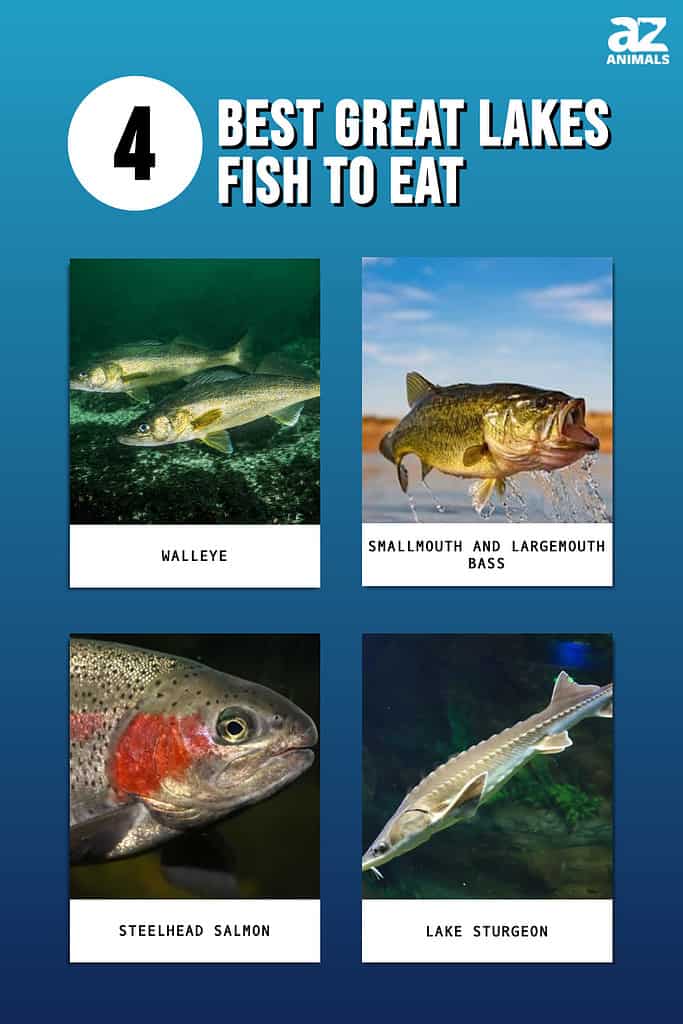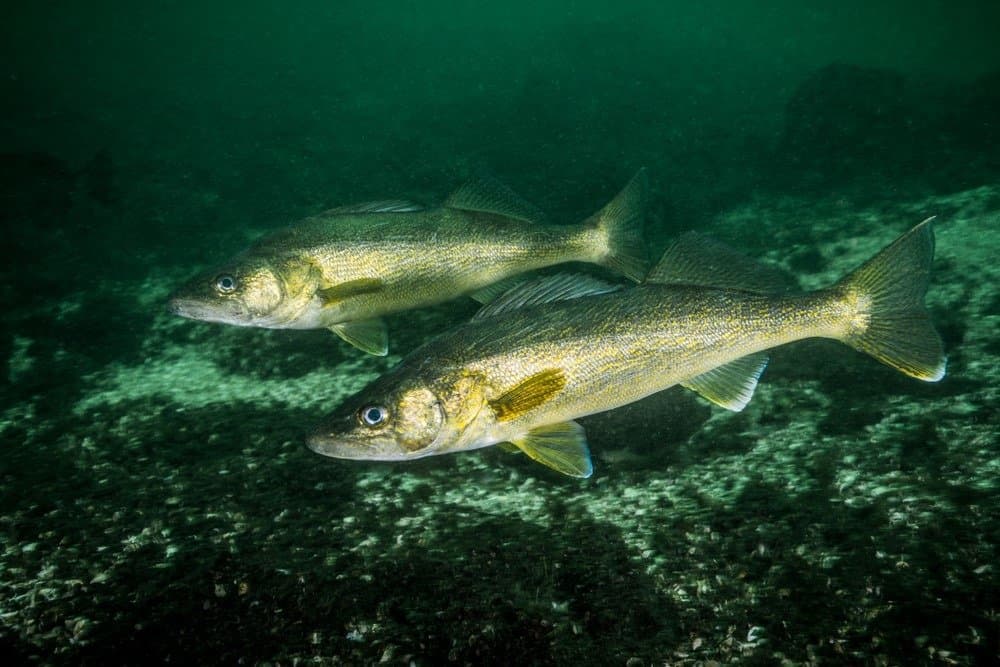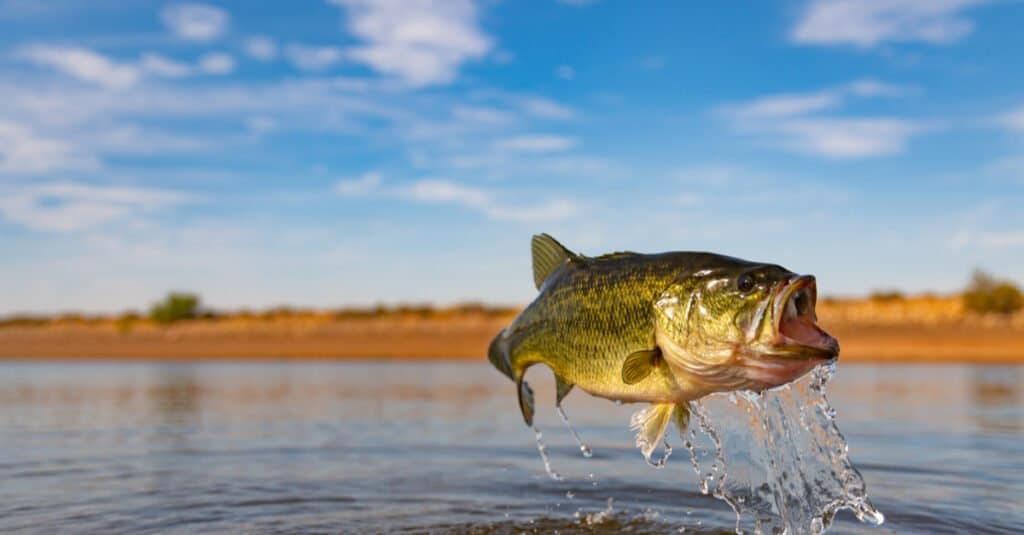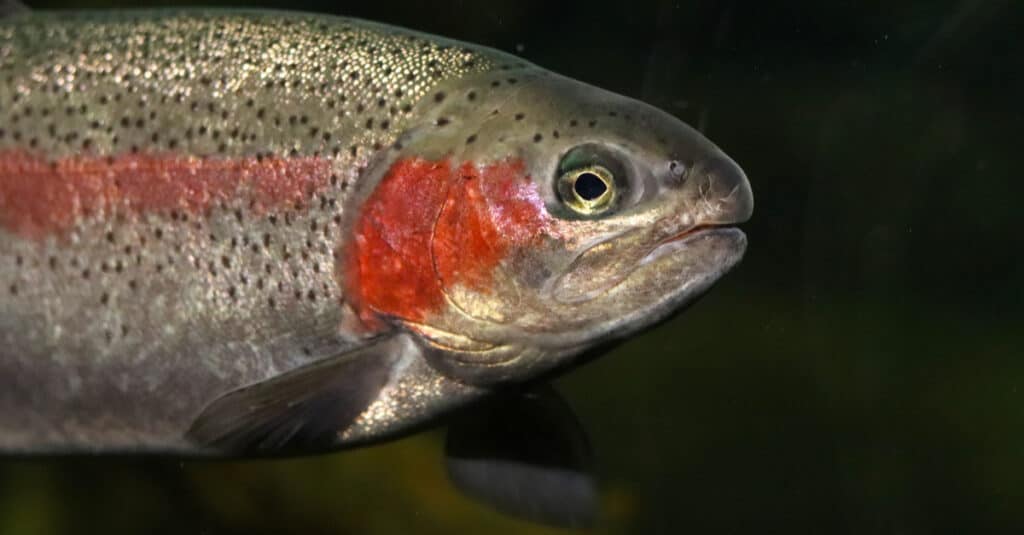The Great Lakes are a group of large and deep freshwater lakes in North America, comprising Lake Superior, Lake Michigan, Lake Huron, Lake Erie, and Lake Ontario. This is the most extensive freshwater system in the world and contains more than 20% of the world’s freshwater, with over 5,400 cubic miles of mainly freshwater. This freshwater system supplies water for more than 40 million people in the United States. Also, it is home to many recreational opportunities such as boating, surfing, paddle boarding, swimming, and even fishing.
This extensive freshwater system is also home to a total of 3,500 species, which also makes this the largest freshwater ecosystem found. Different kinds of animals, such as the black bear, fox, elk, moose, beaver, river otter, and more, call this place their habitat. However, fish are the most numerous of all species found here.

Currently, 177 species of fish live in the Great Lakes, with 139 native species and 34 non-native species thriving within and across the lakes. The Great Lakes served as an essential food source for people surrounding the Great Lakes region, having to harvest almost 40 million pounds of fish until today, offering high quality and sustainable food sources for communities within the area.
Today, we’ll learn about the four best edible Great Lakes fish to eat, their habitats, and where they can be found in the region.
1. Walleye

Walleyes thrive in calm, deep, and quiet waters such as rivers, reservoirs, and lakes.
©RLS Photo/Shutterstock.com
| Walleye | |
|---|---|
| Size | 31 inches (80 cm) |
| Mostly found in | Lake Erie |
Mostly abundant in Lake Erie, the walleye is the go-to fish for every angler. It is a freshwater fish of the perch family and a popular game fish native to the Great Lakes area and some parts of the Missouri and Mississippi river basins. Walleyes are long and thin fish that prefer to thrive in calm, deep, and quiet waters such as rivers, reservoirs, and lakes. They are primarily nocturnal and are often found resting under tree roots, aquatic plants, or logs during the day and traveling to shallow bodies of water at night.
Walleyes are quite an easy target for anglers with various techniques used to catch them. They are also edible fish and excellent protein sources, which are needed to repair and build body parts for better functioning. People who have had walleye in their meals have said they have a subtly sweet flavor and a low level of fishiness, making it an excellent fish to eat if someone enjoys their food with mild flavors. If you prefer less “fishy” and blander-tasting, you might have to try this fish for yourself on your next visit to the Great Lakes.
2. Smallmouth and Largemouth Bass

The largemouth bass grows bigger at 15-30 inches, while the smallmouth bass only grows at 10-20 inches maximum.
©Ryno Botha/Shutterstock.com
| Smallmouth and Largemouth Bass | |
|---|---|
| Size | 10-20 inches (Smallmouth), 15-30 inches (Largemouth) |
| Mostly found in | All five lakes |
The smallmouth and largemouth bass are also among America’s favorite fish. They’re prevalent in sports fishing, and it’s evident that everyone in the country, especially within the Great Lakes region, loves to catch bass, both smallmouth and largemouth. The two of them may look pretty similar as they have the same shape, sometimes have the same size, and may thrive in identical water conditions, but they are still two different species.
The most apparent difference between smallmouth and largemouth bass is that the largemouth grows bigger at 15-30 inches, while the smallmouth only grows at 10-20 inches max. The smallmouth is also known as the “brown bass,” and the largemouth is known as the “green bass.” But in reality, the colors of both fish vary depending on their age and location. As their name suggests, largemouth bass obviously has larger mouths extending past their eyes, while smallmouths are the opposite. Despite their differences, both fish are also caught for food.
However, there are differences in taste, according to locals who have already eaten this fish for lunch. People who have tasted both fish prefer smallmouth rather than largemouth, as it is more delicate with a sweeter and cleaner taste that is less fishy than the largemouth. It has a firm texture and a milder flavor that takes well to spices and seasonings, making it a much preferable choice to the largemouth.
3. Steelhead Salmon

Steelhead salmon are actually anadromous forms of rainbow trout.
©Sean Lema/Shutterstock.com
| Steelhead Salmon | |
|---|---|
| Size | 36-45 inches (91-114 cm) |
| Mostly found in | Lake Erie, Lake Michigan |
Despite their name, steelhead salmon are actually anadromous forms of rainbow trouts. Yet, they only spend one to two years in freshwater environments before migrating into the ocean, whereas rainbow trout spend their entire lives in the freshwater. They look more like rainbow trouts at the early stage of their lives. Still, their behavior of migrating into saltwater has contributed to the adaptations made in their physical appearance, which makes them grow more extensively than trout.
Because of how they live, steelhead salmon are deemed “trouts that behave like salmon” by many. They are anadromous forms of trout, yet they migrate into the ocean just like salmon and grow to large sizes. In addition to that, they also return to the ocean to spawn and die, as salmon do.
Other than that, these fish also make a great dish. They have orange flesh like salmon but a milder flavor and are less fatty, like a cross between a trout and a salmon. They also contain fewer toxins than salmon, so if you want a healthier choice, you should try it. If you also want to eat a salmon-like fish without that “fishy” flavor, then the steelhead is for you.
4. Lake Sturgeon

Lake sturgeon can grow up to six and a half feet and weigh close to 200 pounds.
©Geermy/Shutterstock.com
| Lake Sturgeon | |
|---|---|
| Size | 6 and a half feet (2 meters) |
| Mostly found in | Lake Michigan, Lake Superior |
These freshwater giants are among the oldest and largest native species in the Great Lakes region. On average, they are six and a half feet long and close to 200 pounds. They are also considered prehistoric fish as they were roaming around the Earth’s waters 200 million years ago, with the oldest recorded lake sturgeon having died at 155 years old. Their life span ranges from 55 to 150 years, which also makes them the oldest living species of fish in the Great Lakes.
Lake sturgeons take at least 15-25 years to mature, but they can grow to incredibly large sizes, up to 8 feet long, and may weigh 300 pounds, making them a challenging catch for most anglers. Since the mid-1800s, people have been harvesting sturgeons for meat and eggs, which were made into a delicacy similar to caviar. Until now, people have been serving sturgeons in decent portions, but they are more harvested for their eggs, used to make caviar. People who have already tasted sturgeon meat have said that it has a refined, delicate flavor that tastes best when deep-fried.
Summary of the Best 4 Great Lakes
| Name of Fish | Location | Habitat |
|---|---|---|
| Walleye | Lake Erie | Calm, deep and quiet water under roots, plants, and logs. |
| Smallmouth Bass Largemouth Bass | All 5 Great Lakes | Cool water near shoals or submerged logs and in moderately shallow, rocky and sandy areas. Clear, vegetated lakes, ponds, swamps, and the backwaters of pools, creeks and rivers. |
| Steelhead Salmon | Lakes Erie and Michigan | Spend one to two years in freshwater environments before migrating into the saltwater of the ocean. |
| Lake Sturgeon | Lakes Michigan and Superior | Bottom regions of large freshwater lakes and river ecosystems. |
The photo featured at the top of this post is © iStock.com/stammphoto
Thank you for reading! Have some feedback for us? Contact the AZ Animals editorial team.






